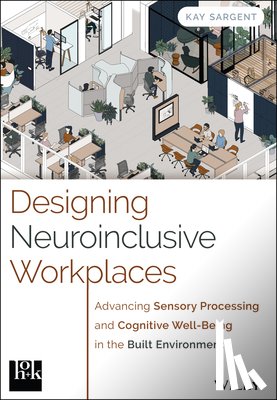Omschrijving
Too often, our work environments are not designed for productivity or inclusion. And while that can certainly be an inconvenience for neurotypical people, it can be downright exclusionary for neurodivergent people who might find it impossible to work in a poorly designed work environment. In Designing Neuroinclusive Workplaces: Advancing Sensory Processing and Cognitive Well-Being in the Built Environment, renowned inclusive workplace design expert Kay Sargent delivers a practical and startlingly insightful new take on how to create spaces that work for neurodivergent individuals while helping everyone thrive. You'll learn how to employ strategic spatial zoning and sequencing, sensory zones, patterns, textures, colors, lighting, and soundscaping to cater to a group that conservatively makes up approximately 1/5 of the world's population. You'll also discover how to make minor adjustments to physical spaces that generate a positive impact in the areas of cognitive function, fulfillment, and belonging for neurodivergent and neurotypical individuals. Designing Neuroinclusive Workplaces reimagines the design of offices and workplaces through a neuroinclusive lens, optimizing spaces to accommodate hypersensitivities across six different work modalities, ranging from focused tasks to collaborative endeavors. It shows you how to transform high-stress environments into welcoming and functional spaces where everyone can be productive and comfortable. Filled with actionable, hands-on strategies for designing spaces that empower all kinds of people from across the neurodiversity spectrum, this book weaves together client stories, interviews with inclusion experts, thought leaders, and individuals who have inspired us, as well as profiles of well-known innovators and creators, and personal insights. This timely and essential resource serves architects, interior designers, real estate and facility professionals, HR professionals, and neurodiversity consultants. It is equally valuable for people responsible for diversity, equity, and inclusion efforts, academics and students interested in neuroinclusive design, neurodivergent employees, and anyone else with a stake or interest in designing the new world of work.


